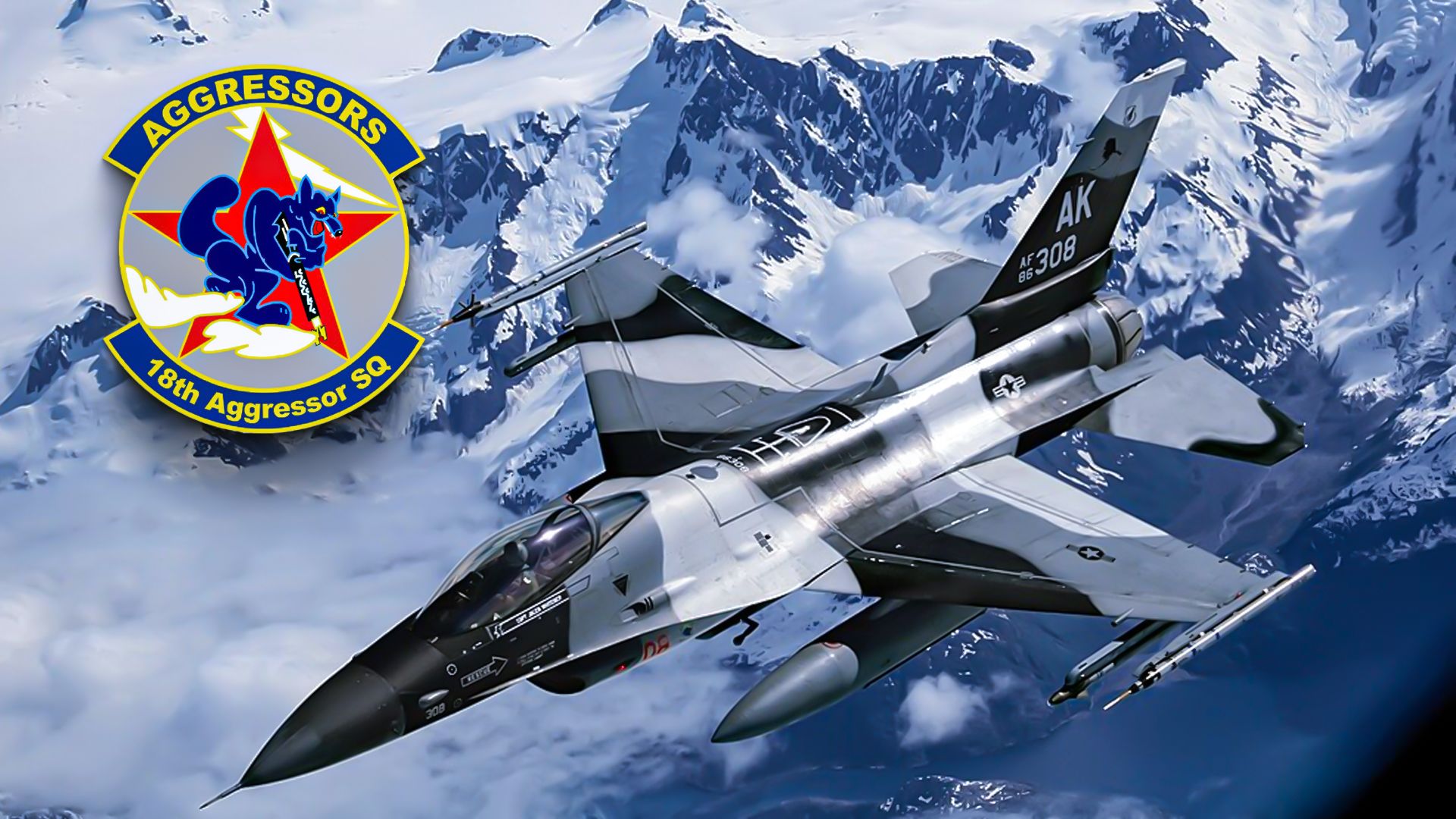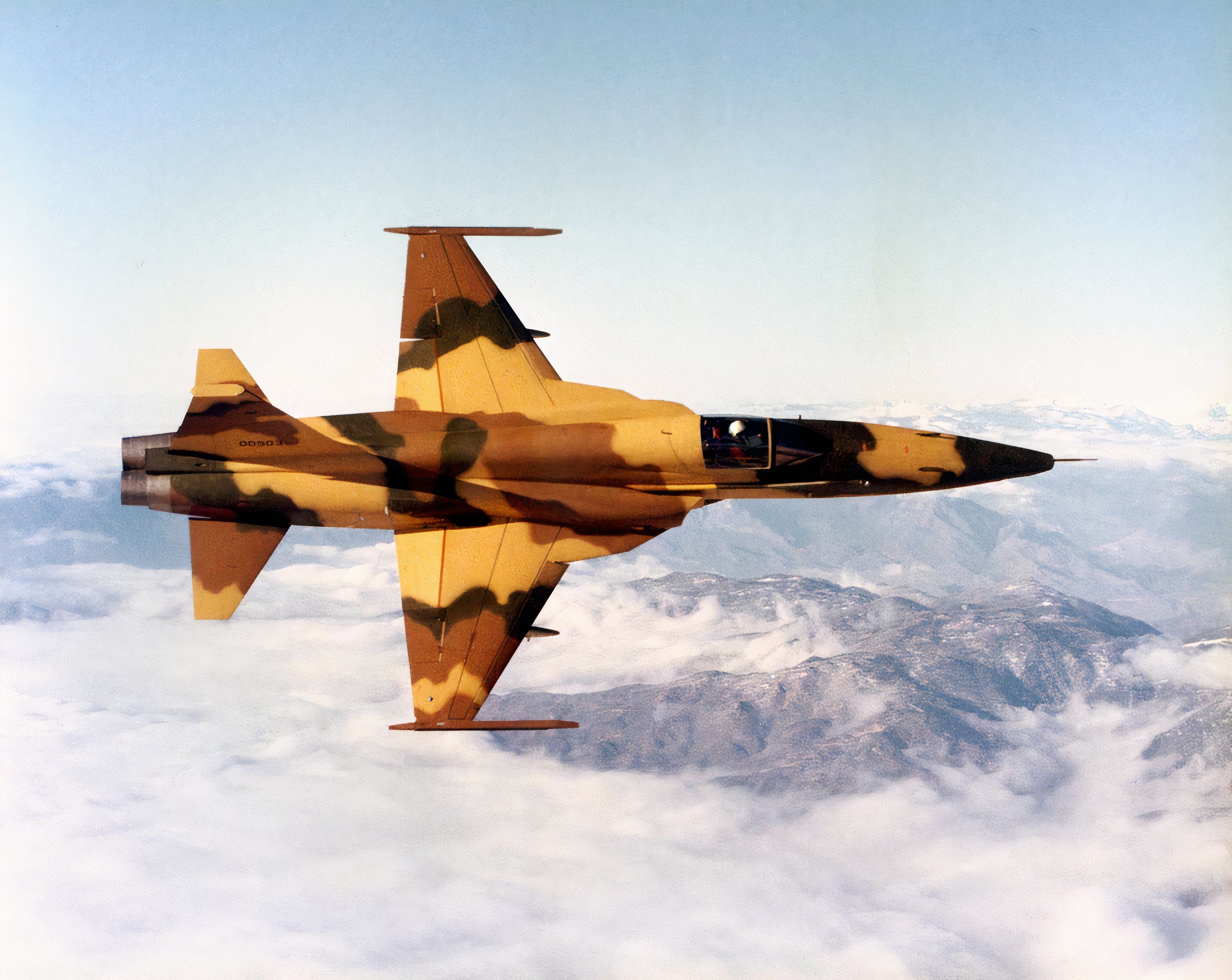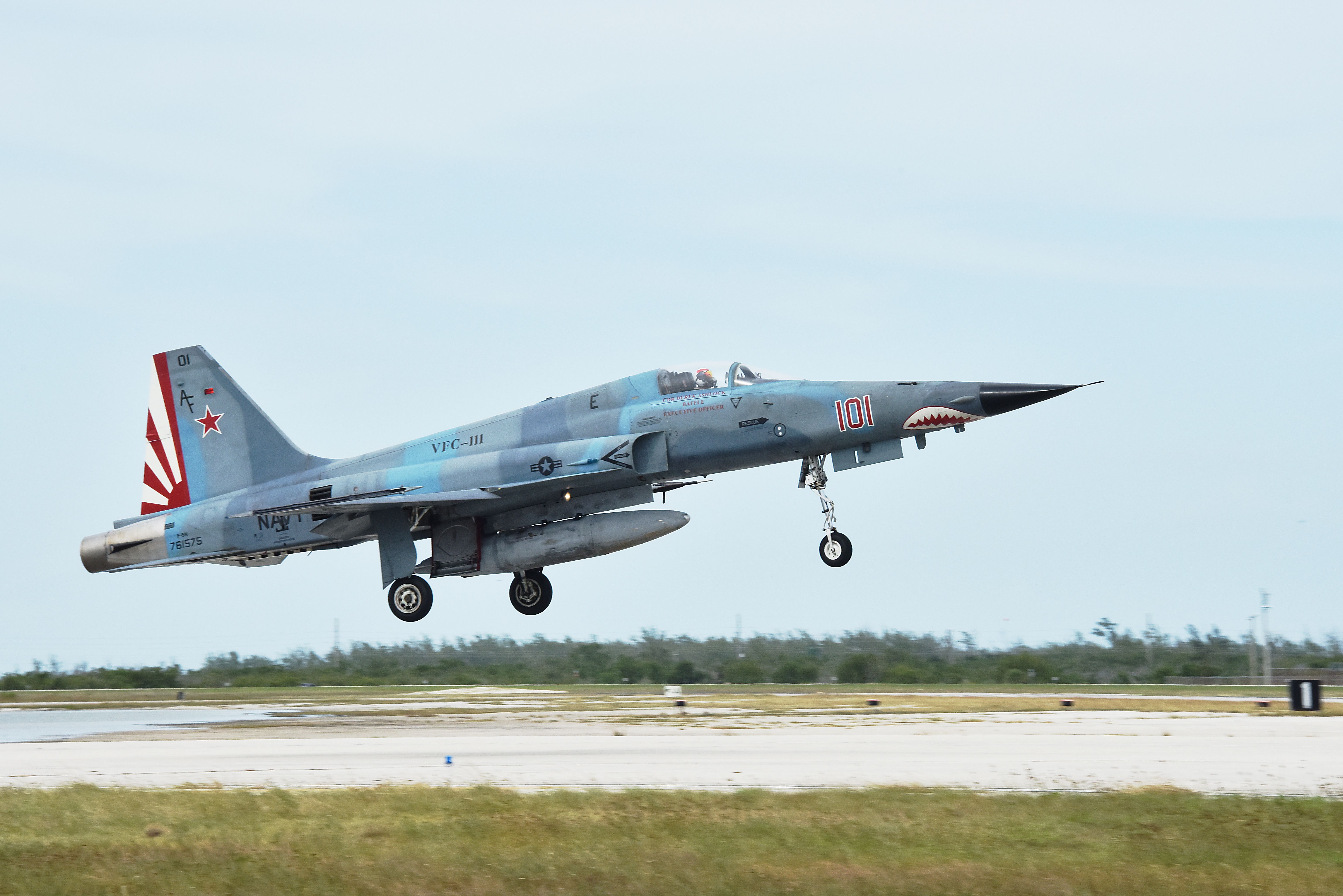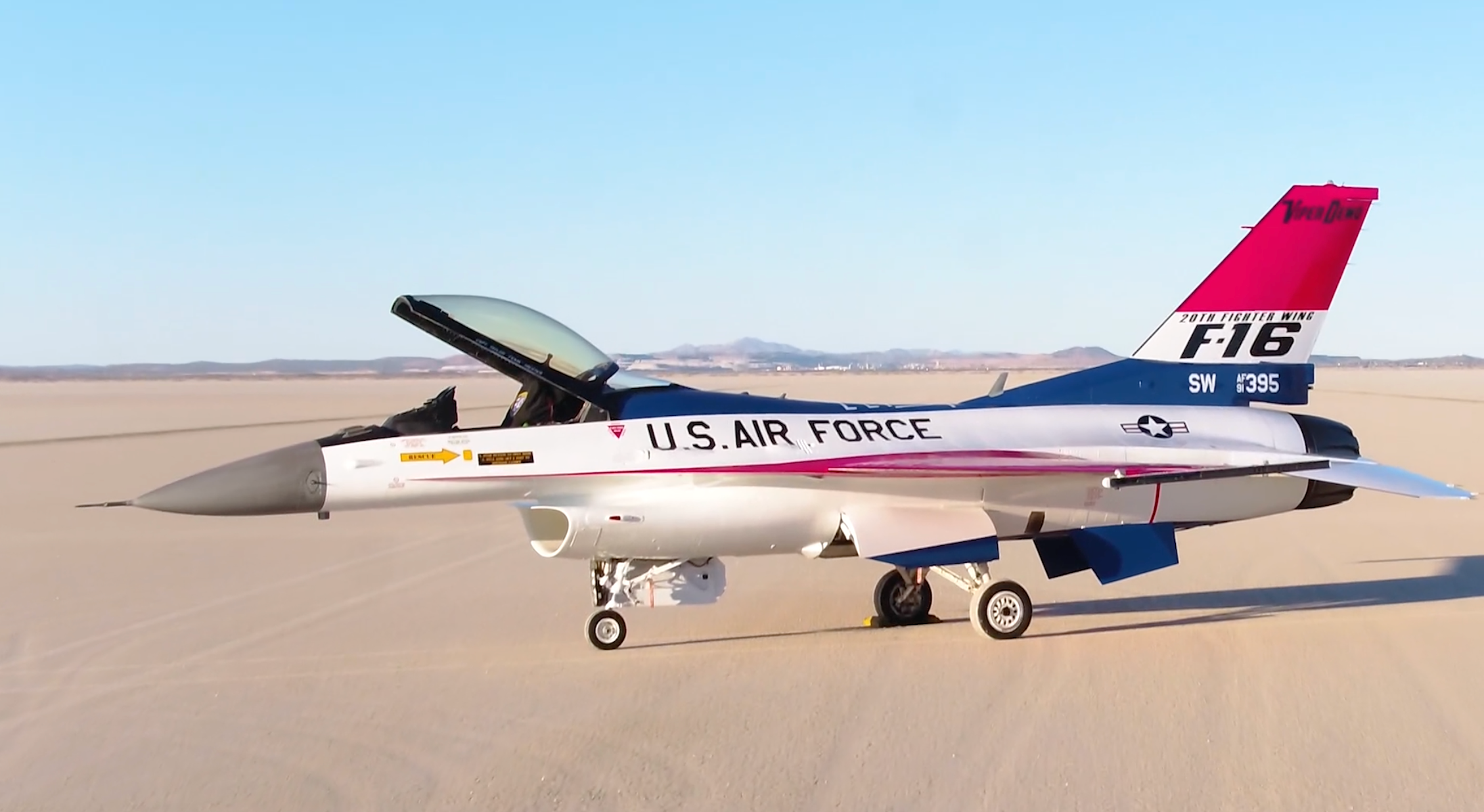Aggressor squadrons are essential for training military pilots by simulating enemy aircraft in combat scenarios. The United States has employed various fighter jets in these squadrons to ensure their pilots are well-prepared for real-world engagements. Below are five iconic US fighter jets that have been widely used in aggressor squadron exercises, listed from the earliest to the latest.
1
A-4 Skyhawk
The original Top Gun aggressor
The A-4 Skyhawk holds a special place in the history of US Navy aviation as one of the original aircraft used in the Navy’s Top Gun program. Its small size, lightweight design, and exceptional agility made it an ideal candidate for replicating enemy MiG fighters during the Vietnam War era.
According to Britannica, the A-4 was known for its durability and ease of maintenance, which made it a reliable aircraft in both training and combat roles. Although it has been replaced by more modern aircraft like the F-16 in aggressor roles, the A-4’s legacy lives on in military aviation history.
- Year introduced: 1956
- Maximum speed: 677 mph (1,090 km/h)
- Range: 2,225 miles (3,581 km)
The A-4 Skyhawk’s contributions to the aggressor role helped refine the combat tactics that would later be used in actual engagements, making it a cornerstone of US Navy pilot training.
2
T-38 Talon
The training aggressor
The T-38 Talon is primarily a training aircraft, but its design allows for modifications that enable it to serve in aggressor roles. Initially intended for supersonic training, its lightweight frame and high speed offer an excellent platform for replicating the characteristics of enemy aircraft in air combat exercises.
The T-38’s twin engines provide a balance of power and efficiency, making it a valuable asset in simulating the high-speed maneuvers of adversary jets. Notably, the jet requires just 2,300 feet (695.2 meters) of runway for takeoff and can ascend from sea level to nearly 30,000 feet (9,068 meters) within one minute, per the US Air Force.
- Year introduced: 1961
- Maximum speed: Mach 1.08 (812 mph / 1,307 km/h)
- Range: 1,093 miles (1,759 km)
This aircraft’s longevity and adaptability underscore its importance in the training ecosystem, as it has been instrumental in preparing generations of pilots for real-world combat scenarios.
3
F-5 Tiger II
Simulating enemy aircraft
The F-5 Tiger II has been a mainstay in US aggressor squadrons, widely respected for its agility and cost-effectiveness. Originally designed for export to US allies, this aircraft found its niche as a key player in adversary training programs.
According to the Naval Air Systems Command, the jet is a single seat, twin-engine, tactical fighter and attack aircraft that provides simulated air-to-air combat training. Its ability to mimic the flight dynamics of various enemy fighters has made it an essential tool in the development of air combat tactics and strategies.
- Year introduced: 1974
- Maximum speed: Mach 1.63 (1,056 mph / 1,700 km/h)
- Range: 2,314 miles (4,286 km)
The F-5 Tiger II’s role as an aggressor has been instrumental in shaping the combat readiness of US pilots, offering a realistic and challenging adversary to hone their skills against.
4
F-16 Fighting Falcon
Versatile and reliable
The F-16 Fighting Falcon, known for its versatility and advanced performance, is extensively used in aggressor squadrons. This aircraft’s impressive thrust-to-weight ratio, advanced avionics, and agility make it a formidable opponent in mock dogfights.
Photo: USAF
The F-16’s ability to simulate a wide range of enemy aircraft makes it an indispensable tool in air combat training. Its adaptability allows it to perform in various roles, from air-to-air combat to ground-attack missions, providing comprehensive training experience, per the US Air Force.
- Year introduced: 1978
- Maximum speed: Mach 2.0 (1,500 mph / 2,414 km/h)
- Range: 2,622 miles (4,220 km)
The F-16’s continued use in aggressor squadrons highlights its enduring value in military aviation. Its presence in aggressor squadrons is crucial for offering a dynamic and challenging training environment, preparing pilots for a wide range of combat scenarios.
5
F/A-18 Hornet
The Navy’s aggressor
The F/A-18 Hornet is a versatile aircraft that serves as a dedicated aggressor for the US Navy and Marine Corps. According to the Naval Air Systems Command, the jet is the country’s first all-weather fighter and attack aircraft.
Photo: USS Theodore Roosevelt (CVN 71) | US Navy
With its twin-engine design and advanced aerodynamic capabilities, the Hornet excels in replicating the flight characteristics of a variety of enemy aircraft during naval exercises. Further, the jet is equipped with state-of-the-art avionics and weapons systems, making it a formidable opponent in simulated combat.
Its role in aggressor squadrons is not just about flying fast and hard; it’s about mimicking the tactical moves and strategies of potential adversaries, thereby providing a more comprehensive training experience for Navy pilots.
- Year introduced: 1981
- Maximum speed: Mach 2 (1,535 mph / 2,471 km/h)
- Range: 2,002 miles (3,222 km)
The F/A-18 Hornet’s significant role in naval aggressor squadrons helps pilots to refine their combat skills and tactics, ensuring they are well-prepared for the complexities of aerial warfare.
Aggressor squadrons continue to be an integral part of military pilot training, and these aircraft have all played vital roles in ensuring that US forces remain at the forefront of aerial combat capabilities. Each jet has contributed to the development of tactics and strategies that have kept US pilots prepared for any potential adversary they might face in the skies.






